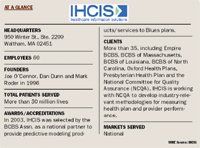- Drug Coverage
- Hypertrophic Cardiomyopathy (HCM)
- Vaccines: 2023 Year in Review
- Eyecare
- Urothelial Carcinoma
- Women's Health
- Hemophilia
- Heart Failure
- Vaccines
- Neonatal Care
- NSCLC
- Type II Inflammation
- Substance Use Disorder
- Gene Therapy
- Lung Cancer
- Spinal Muscular Atrophy
- HIV
- Post-Acute Care
- Liver Disease
- Pulmonary Arterial Hypertension
- Safety & Recalls
- Biologics
- Asthma
- Atrial Fibrillation
- Type I Diabetes
- RSV
- COVID-19
- Cardiovascular Diseases
- Breast Cancer
- Prescription Digital Therapeutics
- Reproductive Health
- The Improving Patient Access Podcast
- Blood Cancer
- Ulcerative Colitis
- Respiratory Conditions
- Multiple Sclerosis
- Digital Health
- Population Health
- Sleep Disorders
- Biosimilars
- Plaque Psoriasis
- Leukemia and Lymphoma
- Oncology
- Pediatrics
- Urology
- Obstetrics-Gynecology & Women's Health
- Opioids
- Solid Tumors
- Autoimmune Diseases
- Dermatology
- Diabetes
- Mental Health
Eye-level data
Information creates opportunity . . . opportunity to realize value in the products we buy and the services we receive. A phenomenon in retail shopping took place about 10 years ago when advances in information technologies placed consumer information at our fingertips, allowing us to compare products in an endless number of ways.
Information creates opportunity-opportunity to realize value in the products we buy and the services we receive. A phenomenon in retail shopping took place about 10 years ago when advances in information technologies placed consumer information at our fingertips, allowing us to compare products in an endless number of ways.
Average consumers now know the MSRP on a new car, government-published safety ratings, resale value and all the options they can add. Joe O'Connor, CPA, president and CEO for Integrated Healthcare Information Services Inc. (IHCIS), sees similar opportunities in healthcare.

O'Connor wants to change those circumstances for healthcare. "We believe that healthcare information can be leveraged in ways that are commonplace in other industries-ways that add significant value. We see a future where individual consumers will view their own customized health information so that they can understand the risks of treatment and their personal options to make better treatment decisions. Information should be out at the patient and provider level," O'Connor says.

Q How confident is the industry in predictive modeling? Are there risks in predictive modeling that are overshadowed by the promise and current fascination with its potential? Can a fundamentally bad model (based on bad input data) cause more harm than good?
A The healthcare industry's confidence in predictive modeling is well-grounded and continues to grow as organizations gain more experience with applying these tools, particularly for medical management and underwriting activities. Predictive modeling is routinely used in many other industries to increase the value provided to customers, and healthcare can benefit from these tools as well.
As one example, [plans can] improve care quality and satisfaction for at-risk members by employing predictive modeling as part of their proactive case and care management programs. The medical cost of serving these patients can also be reduced through patient interventions.
Like most technologies, it is important for health plans to utilize predictive modeling appropriately and in a manner consistent with their own specific medical management objectives and structure.
Ineffective predictive modeling-either through poor models or data-may waste valuable health plan resources and negatively impact relations with members. Fortunately, the industry recognizes the promise of using information to improve value in healthcare. Organizations are becoming more sophisticated in assessing predictive modeling technologies and how they can be applied. Initiatives are also under way to advance the availability, quality and timeliness of data sources that may enhance these technologies, including clinical data. In parallel, we are making significant methodological advances that take advantage of new information such as laboratory test results, patient surveys and data from biometric devices.
Q How will MCOs justify an investment in predictive modeling with such high turnover in its member base? There are plans whose mentality is not to invest in preventive strategies for populations they may not have more than a couple of benefit periods.
